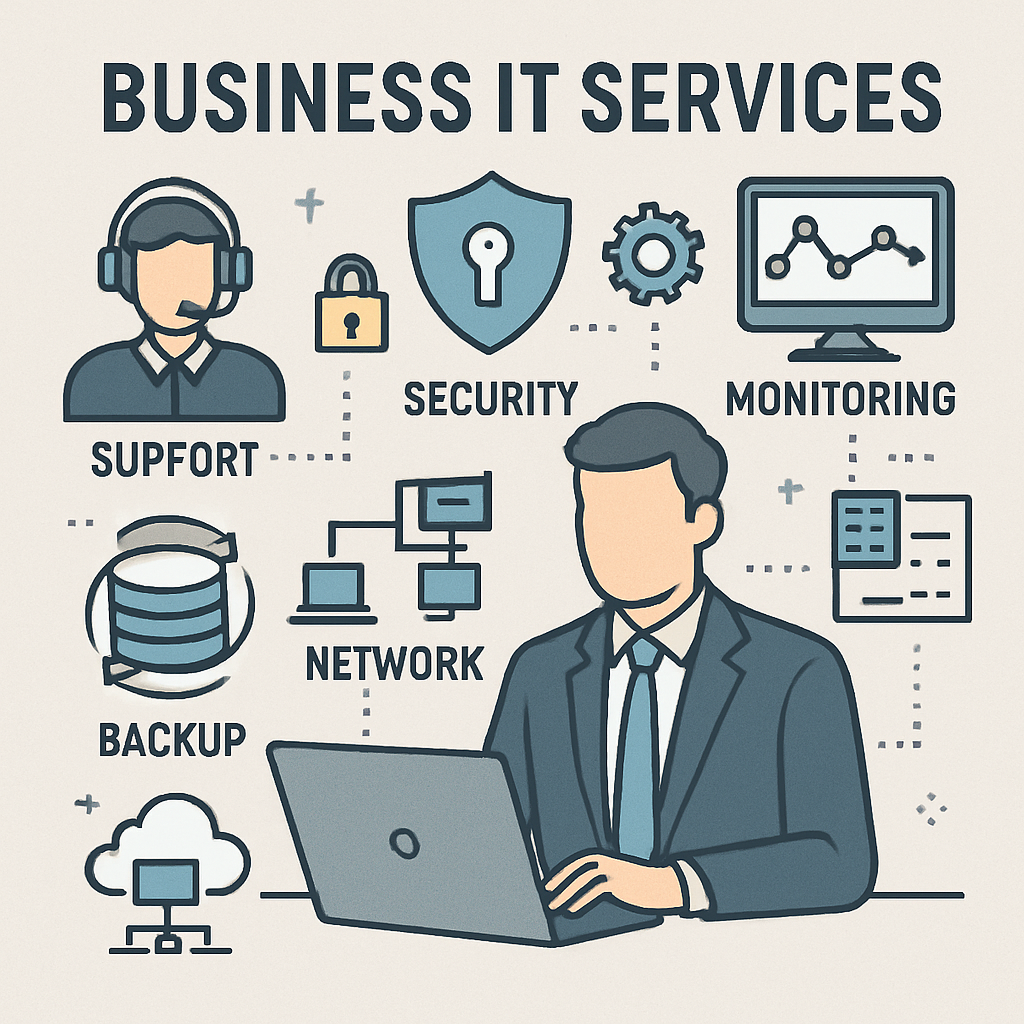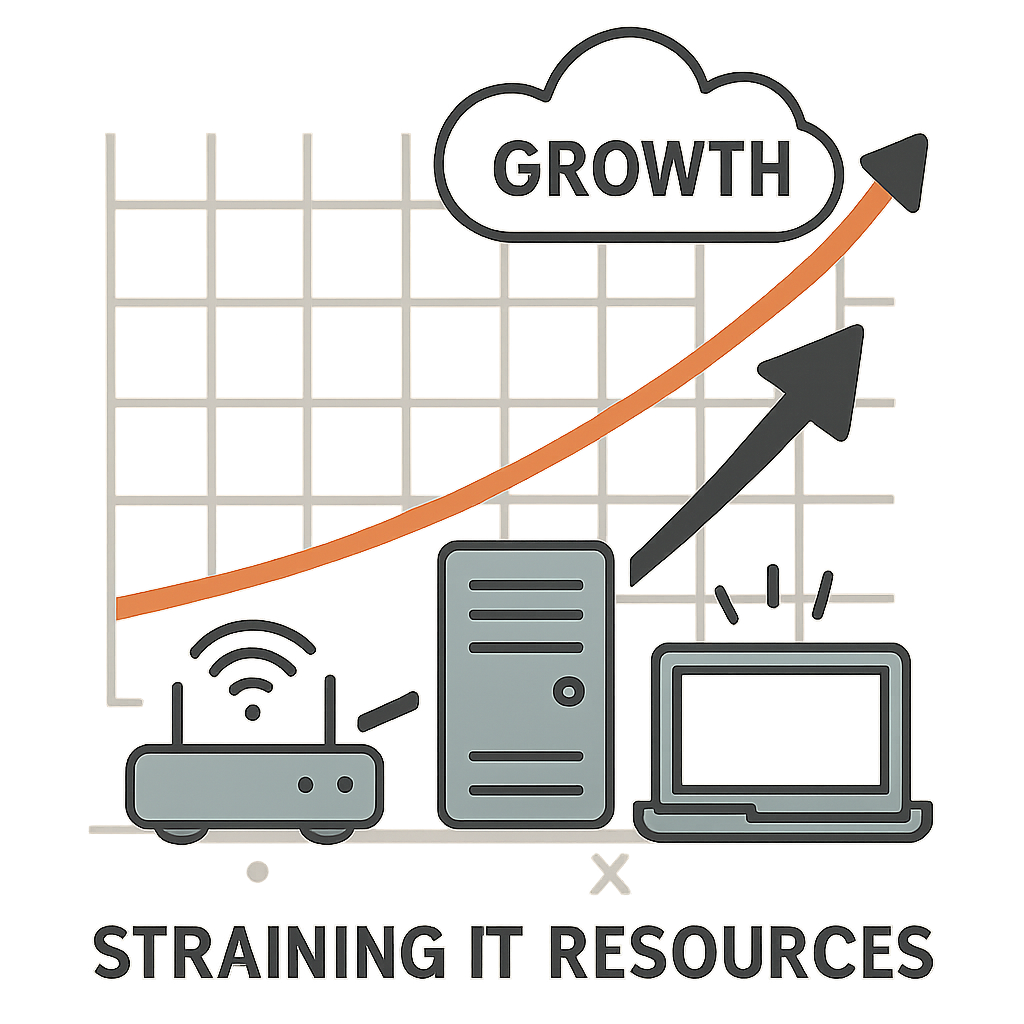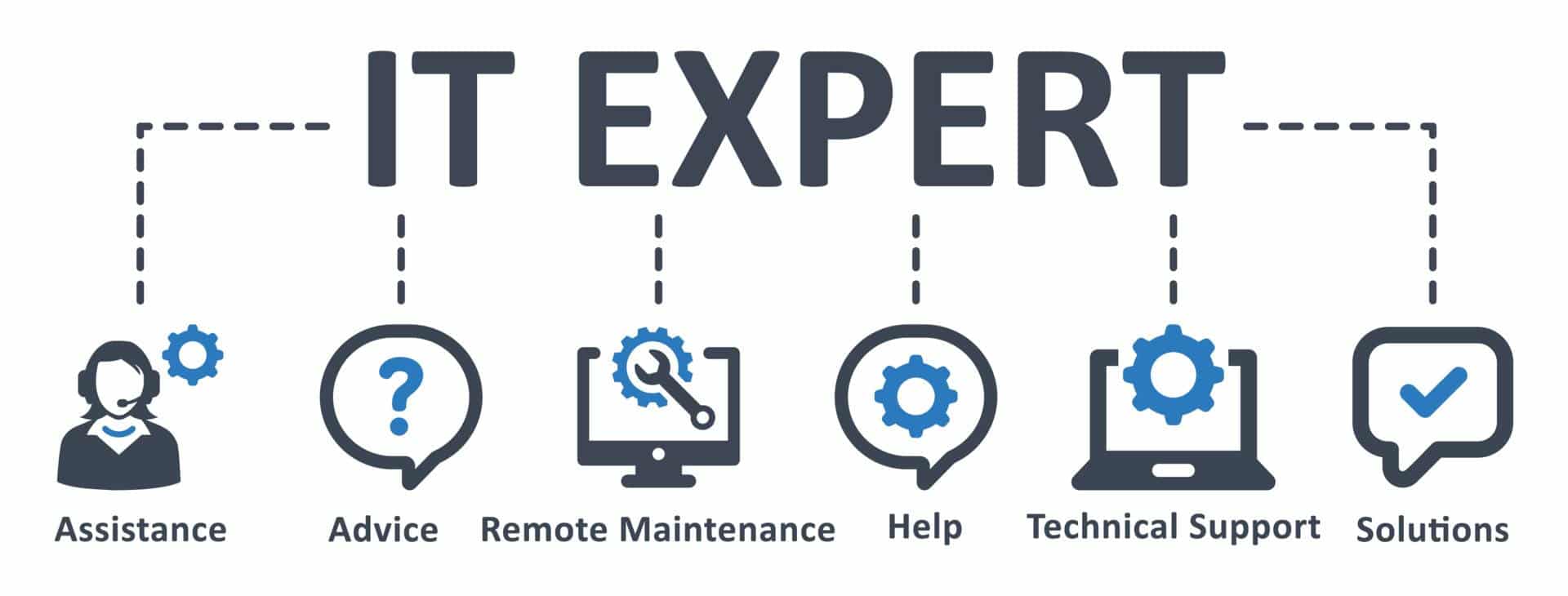Ensure your business thrives with Kateva’s expert IT services for businesses. Discover the seven signs you need IT support now to boost efficiency and security.
In today’s fast-paced business world, technology is the backbone of success. Yet, many businesses struggle to keep up with their IT needs.
Are you facing frequent technical issues? Or perhaps your business is growing faster than your IT can handle.
These are just a few signs that your business might need IT services. Ignoring these signs can lead to bigger problems down the line.
Managed IT services and IT support services can offer the solutions you need. They can enhance productivity, improve security, and reduce costs.
In this article, we’ll explore seven signs that indicate your business needs IT services right now.
Why IT Services for Businesses Matter
IT services for businesses are critical because they streamline operations and boost efficiency. Keeping systems running smoothly is essential for growth and competitiveness.
Technology changes rapidly, and businesses must keep up. Managed IT services provide the support needed to adapt quickly. They enable businesses to focus on core activities without worrying about technical issues.
Here are some key benefits of IT services:
- Improved productivity and workflow
- Enhanced data security and compliance
- Cost-effective technology solutions

These benefits highlight why IT services should be a priority for businesses seeking sustainable growth and stability.
Sign 1: Frequent Technical Issues Disrupting Operations
Frequent technical issues can be a major roadblock to productivity. When systems crash or software malfunctions, it disrupts workflow and frustrates employees. Over time, these disruptions can lead to significant financial losses and erode employee morale.
Businesses experiencing regular IT problems may notice reduced output and missed deadlines. These issues can also damage customer satisfaction if they impact service delivery or communication. The need for frequent troubleshooting diverts resources from core business activities.
Here are typical signs your operations are suffering:
- Slow response times to IT problems
- Regular software crashes or hardware failures
- Increasing employee complaints regarding technology
Addressing these issues promptly can prevent further operational disruptions and enhance overall business efficiency.
Sign 2: Rapid Business Growth Straining IT Resources
Business growth is a positive sign, yet it can overtax existing IT infrastructure. As companies expand, so does the demand for technology support. Without the proper resources, your systems may become overwhelmed.
Scaling up requires robust IT solutions to handle increased data and user loads. A sudden surge in workload can lead to inefficiencies and delays. Moreover, as more employees join, maintaining optimal network performance becomes challenging.
Indicators that growth is overloading your IT systems include:
- Longer system response times
- Increased downtime or outages
- Difficulty supporting remote teams
Investing in scalable IT services ensures seamless growth without sacrificing efficiency.

Sign 3: Cybersecurity Threats and Data Breaches
Cybersecurity is a critical concern for modern businesses. Increasing threats put sensitive data at risk. A data breach can lead to financial losses and reputational damage.
Companies without dedicated IT security face heightened vulnerability. Hackers often target businesses lacking robust defenses. Implementing up-to-date security measures is essential for protection.
Common signs of cybersecurity risks include:
- Frequent unauthorized access attempts
- Regular system alerts about malware
- Suspicious network activity
Managed IT services can fortify defenses against such threats. Proactive monitoring and timely interventions minimize risks and safeguard data. With expert IT services, businesses can stay one step ahead of potential cyber threats.

Sign 4: Outdated Technology Slowing Down Productivity
Old technology can be a major barrier to efficiency. Slow systems frustrate employees and reduce output. Businesses often see delays and errors as a result.
Updating technology might seem costly initially. However, the boost in productivity often offsets these costs. New solutions provide faster performance and better functionality.
Indicators of outdated technology include:
- Slow loading times
- Frequent system crashes
- Incompatibility with new software
Managed IT services offer a seamless transition to modern solutions. They ensure that you have access to the latest tools. Up-to-date technology keeps your team working smoothly and efficiently.
Sign 5: Lack of In-House IT Expertise
Many businesses struggle with limited IT knowledge. They often rely on a small team or a single individual. This can lead to gaps in skill and knowledge.
Without specialized expertise, issues can escalate. Small problems turn into significant setbacks, affecting overall operations. Hiring skilled professionals can be expensive and hard to manage.
You might notice:
- Delays in resolving technical problems
- Inadequate knowledge of cybersecurity practices
- Challenges in implementing new technologies
Partnering with IT support services fills this gap. They provide access to a broad range of technical skills. Leveraging expert knowledge ensures your business runs smoothly and securely.
Sign 6: No Disaster Recovery or Backup Plan
Unexpected events can disrupt business operations severely. Whether natural disasters or cyber-attacks, without a recovery plan, chaos ensues. A lack of backups can mean losing critical data forever.
Establishing a comprehensive plan is crucial. It reduces downtime and ensures business continuity. Without it, recovery time increases, and operational losses mount.
Consider these risks:
- Critical data may be permanently lost
- Extended downtime affects revenue
- Regulatory compliance can become an issue
Managed IT services can help create and implement an effective disaster recovery strategy. They offer reliable data backups and ensure quick restoration.

Sign 7: High IT Costs and Unpredictable Expenses
Managing IT costs is a significant challenge for many businesses. Unexpected expenses can disrupt budgeting, leading to financial strain. Without a clear plan, costs can spiral out of control.
Frequent repairs or system replacements are often unpredictable. This leads to constant budget overruns. Unsustainable costs can cripple growth and innovation.
Businesses should evaluate the cost-effectiveness of their current IT management. Outsourcing to managed IT services offers predictable pricing and scalable solutions. This helps stabilize finances and ensures better budget management.
Consider these potential consequences:
- Cash flow issues from unexpected expenses
- Delayed investment in growth opportunities
- Inability to properly forecast IT spending
How Managed IT Services and IT Support Services Can Help
Managed IT services offer comprehensive support tailored to businesses’ unique needs. They provide proactive monitoring, reducing downtime and enhancing productivity. With IT support services, issues get resolved quickly, maintaining system stability.
Investing in these services ensures access to the latest technology without the hassle of in-house management. Predictable pricing models simplify budgeting processes, allowing better financial planning. The benefits include:
- Improved system performance
- Enhanced data security
- Cost-effective IT management

Next Steps: Choosing the Right IT Services for Your Business
Selecting the appropriate IT services for businesses requires careful evaluation of your needs. Begin by assessing your current IT challenges and future goals. Determine which services align best with your objectives.
Consider the following when making your choice:
- The specific expertise provided
- Flexibility in service plans
- Reputation and reliability of the provider
By focusing on these factors, you’ll make a sound decision that supports your business’s growth and efficiency.
GET IN TOUCH
